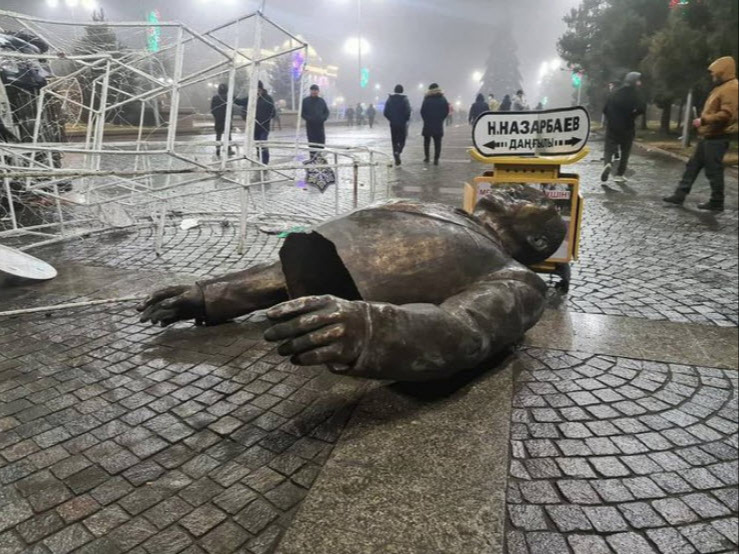Products You May Like
In one version of history, the huge spontaneous protests in Kazakhstan were the result of years of grievances that boiled over after an increase in propane and butane prices, which are widely used as auto fuels there.
In another version, a ‘hybrid war’ is ongoing where there’s an ongoing “attempt to undermine the security and integrity of the state by force, using trained and organized armed formations, that is inspired from the outside.”
That’s the a statement from Russia’s foreign ministry after 3500 Russian soldiers under the CSTO were deployed after Kazakhstan requested help.
So which is it?
I don’t have the answer. Surely the vast majority of people believe the first version but what may be more important for the future is what Russia believes.
Clint Ehrlich lays out the Russian view in a great post today. The Kremlin believes that the Orange Revolution in the Ukraine and popular protests in Belarus last year were not spontaneous. The idea is that mass psychological ops are being deployed along with trained organizers. The strange series of ties between Paul Manafort, Ukraine and Cambridge Analytica, Hunter Biden and others certainly leaves the impression that more could have been going on than we know of.
That many in US intelligence were so convinced of Russian interference in US elections certainly makes one wonder what the US is capable of doing in elections and politics elsewhere.
Again, none of that is my area of expertise.
What’s important is that many in the Kremlin believe that’s what is going on.
Enter Kazakhstan
You have to admit that the timing of this mass protest is strange. It came at a time of extremely high tensions on the Ukraine border and with Russian-NATO negotiations set to kick off.
Could the US be sending a message? Or is it a coincidence?
Which version do you think Putin believes?
“This will not motivate Moscow to deescalate the crisis in the long term.
Instead, it will only strengthen perceptions of the West as an existential threat,” Ehrlich writes. “The Kremlin’s biggest fear is a ‘Maidan on Red Square’ – i.e., a repeat of the Ukrainian revolution inside Moscow.
The more that it appears the West is pursuing similar revolutions in former Soviet republics, the more aggressively Russia will push back.”
What’s also scary is that Russia likely believes these psychological ops are working and will be funding and refining similar ‘counter-attacks’ elsewhere, seeding destabilization elsewhere. There’s nothing more dangerous than a country that thinks it’s under attack. There’s already a large segment of the US security aparatus that thinks Trump’s rise is from these very kind of operations — and not without some evidence.
In the years ahead, I expect rising political instability to be a secular trend. Combine that with rising inflation and funmbling of the green transition (and its costs), the lingering political fallout from covid, and there’s a recipe for disaster.

